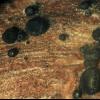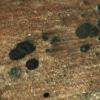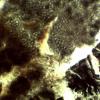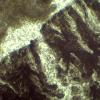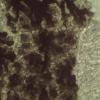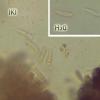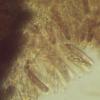
17-12-2025 18:35
 Michel Hairaud
Michel Hairaud
Bonjour à tous/Hi to everyone I am passing along

15-12-2025 15:48
 Danny Newman
Danny Newman
Melanospora cf. lagenaria on old, rotting, fallen

15-12-2025 15:54
 Johan Boonefaes
Johan Boonefaes
Unknown anamorph found on the ground in coastal sa

15-12-2025 21:11
 Hardware Tony
Hardware Tony
Small clavate hairs, negative croziers and IKI bb

15-12-2025 07:09
 Danny Newman
Danny Newman
indet. Rutstroemiaceae sp. on unk. fallen leavesMc

15-12-2025 07:05
 Danny Newman
Danny Newman
Pseudosclerococcum golindoi (det: Zotto)near Cosb

15-12-2025 11:49
 Danny Newman
Danny Newman
ITS sequences from the following two collections B

15-12-2025 12:34
 Danny Newman
Danny Newman
indet. Rhytismataceae on oak leafnear Purchase Roa
 Hello everyone
Hello everyonehere is a discomycete found on dead fallen stem of Chamerion angustifolium; it developed after being kept damp for several days.
Apothecia erumpent, globose becoming discoid, blackish with blackish or slightly paler discs; ectal excipulum with dark cells - 1-2 celled below becoming multicellular toward the disc margin with blunt apices.
Asci 25-30 x 4.5-5µm; (surprisingly) none showing any blueing in Lugol - pre-treatment with KOH not yet attempted.
Ascospores 8-9.5 x 2 µm, with no, or only only small, guttules at each end, rounded above, slightly tapered below.
This seems to me to be a good Pirottaea (if one accepts the genus as distinct); of the 11 species of Pirottaea recorded for Britain so far this does not seem to match any of them; in addition as I understand it this is a largely host-limited fungal genus, and no species have been recorded on Chamerion (or Epilobium) in the UK.
I would welcome any comments
amitiés
Chris

first, I must doubt the inamyloidity of the asci. Because I see you have nice living asci of a Helicogonium with biguttulate clavate spores on your pics. Quite large oildrops, unlike the free spores which are narrower, more cylindrical.
So Helicogonium, probably trabinelloides, typically of Pyrenopeziza s.l., named after the spores resembling "Phaeohelotium" trabinellum. All Helicogonium are inamyloid.
The hairs of the Pirottaea: are they laterally thickwalled and darker? It seems a bit, so perhaps P. imbricata
Zotto

I was struck at the time by how a number of the asci seemed "wrong" for a mollisiaceous discomycete and of course these were the ones which became easiest to examine in a squash - for one thing they had distinct apical "caps" and of course they were I- which was not what I was expecting; so most of my comments re the asci (above) clearly refer to the Helicogonium. This is a genus which I have not (knowingly) come across before - I shall be a little wiser in future! Having worked through your key I am sure this is indeed H. trabellinoides, based on spore number and size, "cap" shape, presence of croziers and host.
I have now had chance to consult Nannfeldt's review of Pirottaea in Symb.Bot.Upsal. XXV:1, and also your drawings and photographs on the DVD. I think Pirottaea cf. imbricata is indeed the best place to file this. Do you think that under this name lies a species-complex of morphologically near-identical taxa on a wide range of hosts??
many thanks as ever for your help
Chris

Zotto

